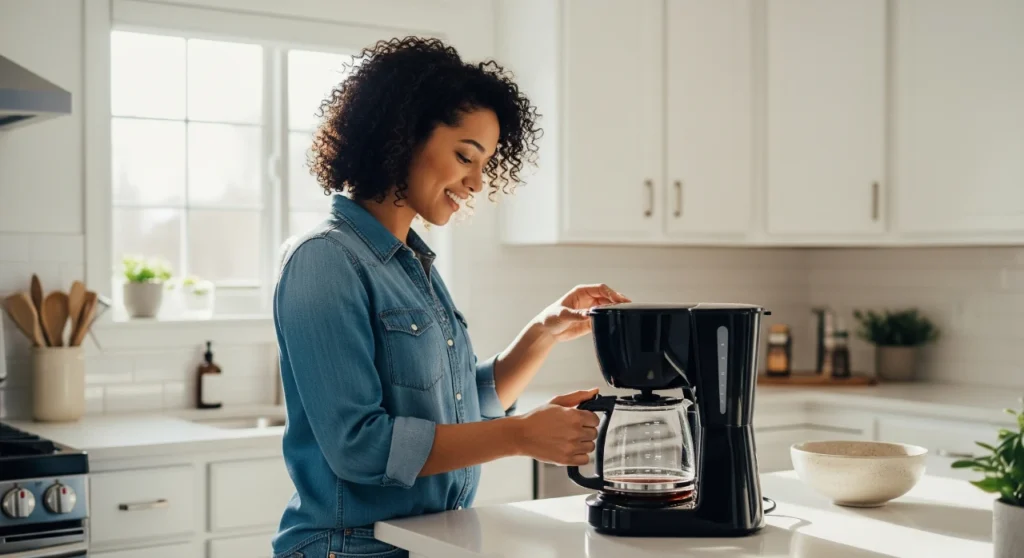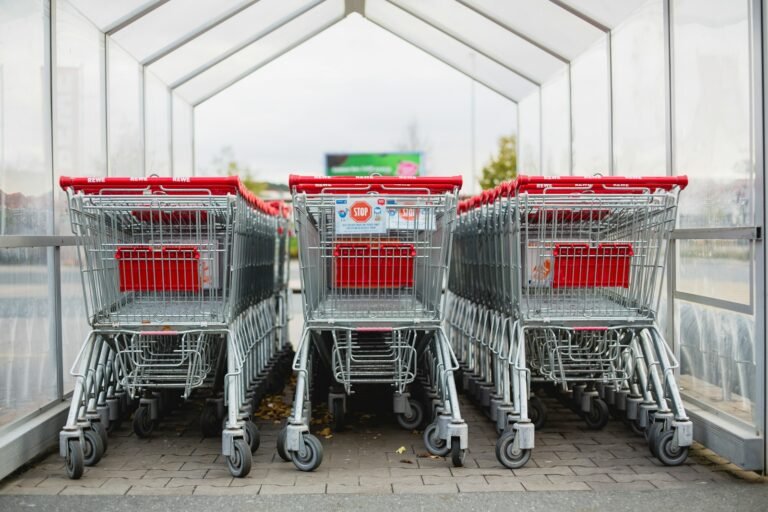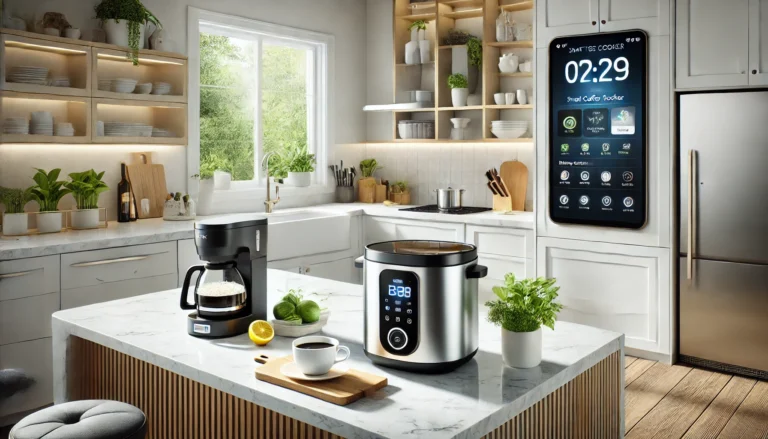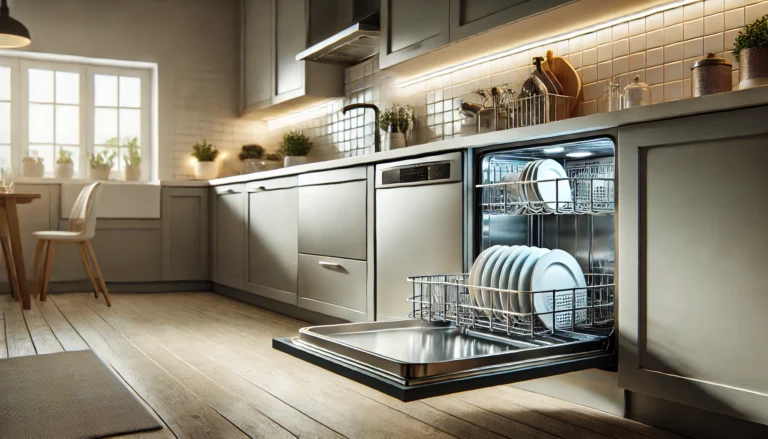There’s nothing quite like the aroma of freshly brewed coffee to kickstart your day. Whether you’re a connoisseur of complex espresso or a lover of a simple, robust drip, finding the perfect coffee maker can transform your daily ritual. As we move further into 2025, the market is brimming with innovative machines designed to deliver café-quality brews right in your kitchen.
We’ve scoured the latest releases and put countless hours into testing to bring you a definitive list of the Top 10 Best Coffee Makers for USA Customers in 2025, focusing on quality, ease of use, features, and value. Get ready to elevate your coffee game!
Our Top 10 Best Coffee Makers Picks for 2025
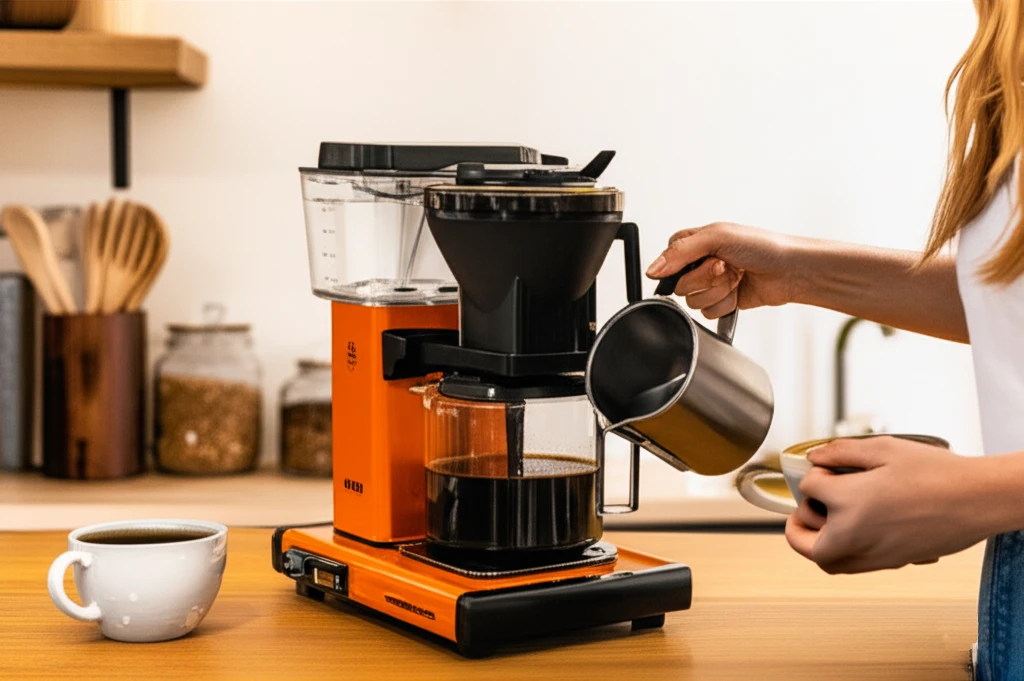
Here’s our meticulously curated list of the best coffee makers you can find on Amazon US right now, complete with their highlights and considerations:
1. Technivorm Moccamaster KBGV Select Coffee Maker
Why it’s a top pick: The Moccamaster consistently earns rave reviews for its exceptional brew quality and durability. Hand-built in the Netherlands, it adheres to the Specialty Coffee Association (SCA) Golden Cup standards, ensuring optimal brewing temperature and extraction. It’s designed for those who prioritize a consistently excellent cup of drip coffee.
Pros:
- SCA Certified: Guarantees precise temperature control (195°F – 205°F) and optimal brewing time.
- Exceptional Brew Quality: Produces a clean, flavorful, and balanced cup.
- Durable Construction: Made with high-quality, long-lasting materials.
- Easy to Use: Simple operation with a single button.
- Fast Brewing: Brews a full pot quickly.
- Thermal Carafe Option: Many models come with a thermal carafe to keep coffee hot for hours without burning.
Cons:
- Premium Price Tag: It’s an investment, but worth it for serious coffee lovers.
- Minimal Features: Lacks advanced programmability or fancy settings.
2. Breville Precision Brewer Thermal Coffee Maker
Why it’s a top pick: For those who crave versatility and customization in their drip coffee, the Breville Precision Brewer is a game-changer. It offers a wide range of brewing options, from precise pour-over style to cold brew, all with digital temperature control.
Pros:
- Highly Versatile: Brews multiple styles including Gold Cup, Over Ice, Cold Brew, and My Brew (customizable).
- Precise Temperature Control: Digital PID control ensures optimal water temperature throughout the brewing cycle.
- Adjustable Bloom Time: Allows for perfect pre-infusion for maximum flavor extraction.
- Large Capacity: Brews up to 12 cups.
- SCA Certified: Meets the rigorous standards for quality brewing.
Cons:
- Learning Curve: The extensive features might be overwhelming for beginners.
- Larger Footprint: Takes up a bit more counter space.
3. Ninja CFP301 Dual Brew Pro 12-Cup Coffee Maker
Why it’s a top pick: The Ninja Dual Brew Pro offers the best of both worlds – the convenience of single-serve pods and the flexibility of brewing a full carafe of ground coffee. It’s a fantastic all-in-one solution for households with varying coffee preferences.
Pros:
- Dual Brewing Options: Brews K-Cups and ground coffee.
- Multiple Brew Sizes: Offers various cup sizes for both single-serve and carafe brewing.
- Specialty Brew Options: Includes settings for classic, rich, over ice, and specialty brews (for lattes and cappuccinos).
- Built-in Milk Frother: Convenient for creating milk-based coffee drinks.
- Affordable Versatility: Provides a lot of features for its price point.
Cons:
- Taste May Vary: While versatile, the quality of single-serve coffee might not match premium drip or espresso.
- Plastic Construction: Some components feel less premium than higher-end models.
4. OXO Brew 8-Cup Coffee Maker
Why it’s a top pick: The OXO Brew 8-Cup is lauded for its consistent, delicious drip coffee and user-friendly design. It’s SCA certified, ensuring it meets high standards for brewing quality, making it an excellent choice for those who want a reliable and great-tasting cup without fuss.
Pros:
- SCA Certified: Ensures optimal brewing conditions for delicious coffee.
- Rainmaker Shower Head: Distributes water evenly over coffee grounds for full saturation and flavor extraction.
- Simple Operation: Easy to set up and use with intuitive controls.
- Durable and Attractive Design: Looks great on any counter.
- Keeps Coffee Hot: Good heat retention in its thermal carafe.
Cons:
- Smaller Capacity: Only brews up to 8 cups, which might be limiting for large households.
- No Programmable Timer: Lacks the ability to set a delayed brew.
5. Breville Barista Express Impress Espresso Machine
Why it’s a top pick: For aspiring home baristas, the Barista Express Impress offers an integrated grinding and tamping system that makes café-quality espresso more accessible. It guides you through the brewing process, helping you achieve consistent results.
Pros:
- Integrated Grinder & Tamping: Simplifies the espresso-making process and ensures consistent dosing.
- Assisted Tamping: Provides feedback to help you achieve the perfect tamp pressure.
- Manual Milk Frothing Wand: Allows for microfoam texturing for lattes and cappuccinos.
- Fast Heat-Up Time: Ready to brew quickly.
- High-Quality Espresso: Capable of producing rich, nuanced shots.
Cons:
- Learning Curve for Espresso: While assisted, making perfect espresso still requires practice.
- Pricey: A significant investment for a home machine.
- Regular Cleaning Required: Espresso machines need more frequent cleaning and maintenance.
6. Keurig K-Elite Single Serve Coffee Maker
Why it’s a top pick: For ultimate convenience and speed, the Keurig K-Elite remains a popular choice. It’s perfect for individuals or small households who want a quick, consistent cup of coffee without the fuss of grinding beans or extensive cleanup.
Pros:
- Fast and Convenient: Brews a cup in under a minute.
- Multiple Cup Sizes: Offers various serving sizes.
- Iced Coffee Setting: Brews a stronger, concentrated coffee over ice.
- Hot Water on Demand: Dispenses hot water for tea or other beverages.
- Removable Water Reservoir: Easy to refill.
Cons:
- Pod Waste: Generates plastic waste from K-Cups, though reusable pods are available.
- Limited Customization: Less control over brew strength and flavor compared to other methods.
- Higher Cost per Cup: K-Cups can be more expensive than ground coffee.
7. Cuisinart Coffee Center Grind & Brew Plus
Why it’s a top pick: This machine combines the convenience of a drip coffee maker with a built-in grinder, allowing you to enjoy fresh-ground coffee every morning with minimal effort. It’s a great option for those who want better flavor than pre-ground but don’t want a separate grinder.
Pros:
- Integrated Burr Grinder: Grinds fresh beans before brewing for superior flavor.
- Programmable: Set it to brew automatically at a specific time.
- Large Capacity: Brews up to 12 cups.
- Brew Pause Feature: Allows you to pour a cup before the brewing cycle is complete.
- Charcoal Water Filter: Improves coffee taste by removing impurities.
Cons:
- Grinder Can Be Noisy: Like most integrated grinders, it can be loud.
- Cleaning the Grinder: Requires regular cleaning to prevent buildup.
- Takes Up Counter Space: Combines two appliances into one.
8. AeroPress Original Coffee Maker
Why it’s a top pick: While not an electric machine, the AeroPress deserves a spot for its incredible versatility, portability, and ability to produce exceptionally smooth, rich coffee and espresso-style concentrate. It’s beloved by travelers, campers, and anyone seeking a high-quality manual brew.
Pros:
- Exceptional Flavor: Produces a clean, low-acidity brew.
- Versatile: Can make Americano, espresso-style concentrate, and cold brew.
- Portable and Durable: Lightweight and great for travel.
- Easy to Clean: Simple and quick cleanup.
- Affordable: One of the most cost-effective ways to make great coffee.
Cons:
- Manual Process: Requires hands-on effort.
- Small Batch Size: Brews one to three cups at a time.
9. Mr. Coffee Simple Brew 12-Cup Switch Coffee Maker
Why it’s a top pick: For those on a budget who still want a reliable and straightforward drip coffee experience, the Mr. Coffee Simple Brew is an enduring classic. It gets the job done without any unnecessary bells and whistles.
Pros:
- Extremely Affordable: Excellent value for money.
- Simple to Use: One-button operation for easy brewing.
- Large Capacity: Brews up to 12 cups, great for families or entertaining.
- Compact Design: Doesn’t take up much counter space.
- Brew Pause Feature: Allows you to grab a cup mid-brew.
Cons:
- Basic Features: Lacks advanced settings like programmability or brew strength control.
- Glass Carafe: Doesn’t keep coffee hot as long as thermal carafes.
- Less Durable: May not last as long as higher-end models.
10. De’Longhi TrueBrew Automatic Coffee Machine
Why it’s a top pick: The De’Longhi TrueBrew offers bean-to-cup convenience, grinding fresh beans for every cup and providing a range of brew sizes and styles. It’s an excellent choice for those who want fresh, automatic coffee without the complexity of a full espresso machine.
Pros:
- Bean-to-Cup Convenience: Grinds fresh beans for each brew.
- Multiple Brew Sizes: From an 8-oz cup to a 24-oz carafe.
- Variety of Brew Styles: Light, Gold, Bold, Over Ice.
- No Pods Needed: Reduces waste and offers fresher coffee.
- Easy to Use Interface: Intuitive controls for selection.
Cons:
- Higher Price Point: More expensive than standard drip coffee makers.
- Regular Cleaning: Requires routine maintenance for the grinder and brewing unit.
- Can Be Noisy: Grinding fresh beans always generates some noise.
Coffee Makers Buying Guide 2025: Your Roadmap to the Perfect Brew
Choosing the right coffee maker can feel overwhelming with so many options available. This comprehensive buying guide will help you navigate the choices and find the perfect machine for your needs and preferences in 2025.
1. Types of Coffee Makers: What’s Your Style?
- Drip Coffee Makers: The most common type. Water heats and drips through ground coffee in a filter into a carafe below.
- Best for: Brewing larger quantities, daily convenience, and consistent flavor.
- Consider: Programmability, carafe type (glass vs. thermal), brew strength control, SCA certification.
- Single-Serve/Pod Coffee Makers (e.g., Keurig, Nespresso): Use pre-portioned pods for quick, individual cups.
- Best for: Speed, convenience, portion control, diverse beverage options (with different pods).
- Consider: Pod cost and environmental impact, limited customization, and often less nuanced flavor than other methods.
- Espresso Machines (Manual, Semi-Automatic, Automatic, Super-Automatic): Brew concentrated coffee (espresso) by forcing hot, pressurized water through finely ground coffee.
- Manual: Full control, high skill required (e.g., lever machines).
- Semi-Automatic: You grind, tamp, and froth milk; the machine controls pressure and temperature. Offers control and quality.
- Automatic: Machine handles dose and brew volume; you still froth milk.
- Super-Automatic (Bean-to-Cup): Grinds beans, tamps, brews, and often froths milk automatically. Ultimate convenience, less control.
- Best for: Espresso lovers, lattes, cappuccinos, those who enjoy the ritual or ultimate convenience.
- Consider: Price, learning curve, maintenance, counter space, milk frothing capabilities.
- Pour-Over Coffee Makers: Manual method where hot water is slowly poured over coffee grounds in a filter.
- Best for: Connoisseurs seeking maximum control over extraction, bright and clean flavors, and mindful brewing.
- Consider: Requires technique and patience, usually brews one to two cups.
- French Press: Coffee grounds steep in hot water, then a plunger with a mesh filter presses the grounds to the bottom.
- Best for: Rich, full-bodied coffee, retaining coffee oils, portability.
- Consider: Sediment in the cup, longer brew time, manual cleanup.
- Cold Brew Coffee Makers: Steep coffee grounds in cold water for an extended period (12-24 hours) to produce a concentrated, low-acid brew.
- Best for: Smooth, less acidic coffee, making large batches of concentrate, mixing with milk or water.
- Consider: Long brew time, requires planning.
2. Capacity: How Many Cups Do You Need?
- Single-serve: Ideal for one person or occasional coffee drinkers.
- 4-6 cups: Good for 1-2 people.
- 8-12+ cups: Perfect for families, entertaining, or if you drink a lot of coffee throughout the day.
3. Carafe Type: Glass vs. Thermal
- Glass Carafe:
- Pros: See coffee level, often more affordable.
- Cons: Sits on a heating plate, which can “cook” and burn coffee over time, affecting the taste.
- Thermal Carafe:
- Pros: Keeps coffee hot for hours without burning, no heating plate needed, better taste retention.
- Cons: More expensive, cannot see coffee level.
4. Features to Consider: Modern Conveniences
- Programmability: Set your coffee maker to brew at a specific time, so you wake up to fresh coffee.
- Built-in Grinder: Grinds whole beans just before brewing for the freshest taste. Can be burr (superior, consistent grind) or blade (less consistent).
- Brew Strength Control: Adjust the intensity of your coffee to your liking.
- Water Filter: Improves the taste of your coffee by removing impurities from tap water.
- Automatic Shut-Off: A safety feature that turns off the machine after a certain period.
- Brew Pause: Allows you to pour a cup before the brewing cycle is complete.
- Milk Frother/Steamer: Essential for lattes, cappuccinos, and other milk-based drinks. Can be manual steam wand or automatic.
- SCA Certification: Look for coffee makers certified by the Specialty Coffee Association (SCA) for optimal brewing temperature and extraction.
- Smart Features/App Control: Some modern machines connect to your phone for remote brewing, customization, and maintenance alerts.
5. Size and Design: Fit Your Kitchen and Style
- Measure your counter space, including the height under cabinets.
- Consider the aesthetic – do you prefer sleek stainless steel, retro colors, or a minimalist design?
6. Ease of Cleaning and Maintenance
- Removable parts are easier to clean.
- Consider descaling frequency and the availability of cleaning cycles. Espresso machines generally require more diligent cleaning.
7. Budget: How Much Are You Willing to Spend?
- Basic drip coffee makers can be found for under $50.
- High-end drip, single-serve, or entry-level espresso machines typically range from $100-$300.
- Advanced espresso machines and super-automatics can range from $500 to over $1000+.
Frequently Asked Questions (FAQs)
Q1: How often should I clean My Coffee Maker?
A: It depends on the type and how often you use it. For drip coffee makers, clean the carafe and filter basket daily, and descale monthly (or every 2-3 months, depending on water hardness) using a vinegar solution or descaling agent. Espresso machines require daily cleaning of portafilters and steam wands, and regular descaling.
Q2: What’s the difference between A Burr Grinder and A Blade Grinder?
A: A Burr Grinder grinds coffee beans between two abrasive surfaces, providing a consistent and even grind size, which is crucial for optimal extraction and flavor. A Blade Grinder chops beans with a spinning blade, resulting in an inconsistent grind (some fine dust, some coarse chunks), which can lead to uneven extraction and a less flavorful, more bitter cup. For best results, a Burr Grinder is always recommended.
Q3: Can I use pre-ground coffee in an espresso machine?
A: While you technically can, it’s highly recommended to grind fresh beans for espresso. Pre-ground coffee for drip makers is usually too coarse for espresso, leading to a weak, under-extracted shot. Even pre-ground espresso coffee stales quickly. Freshly ground beans are key for a rich crema and robust flavor.
Q4: Is SCA certification really important?
A: Yes, if you prioritize quality drip coffee. SCA certification means the coffee maker meets strict standards for brewing temperature (between 195°F and 205°F) and brew time, which are critical for proper extraction and a delicious cup. It’s a reliable indicator of a machine’s performance.
Q5: How do I make my Coffee taste less bitter?
A: Bitterness can be caused by several factors:
– Over-extraction: Coffee brewed too long, water too hot, or grind too fine.
– Old or stale coffee beans: Always use fresh, high-quality beans.
– Dirty machine: Mineral buildup or old coffee residue can impart bitterness.
– Water quality: Use filtered water if your tap water has a strong taste or high mineral content.
Adjust your grind size, water temperature (if possible), and brewing time to find your sweet spot.
We hope this comprehensive guide helps you find the perfect Coffee Maker to enhance your daily brewing experience. Happy brewing, and enjoy those delicious mornings!
